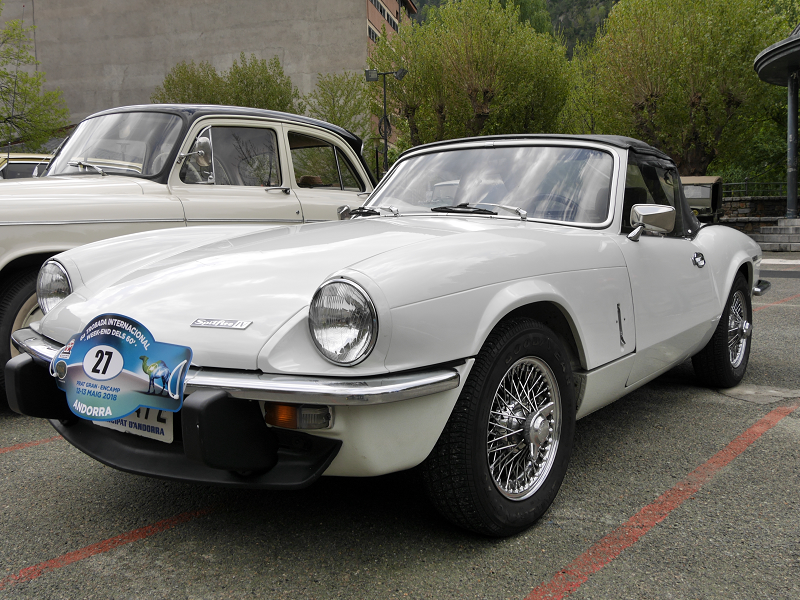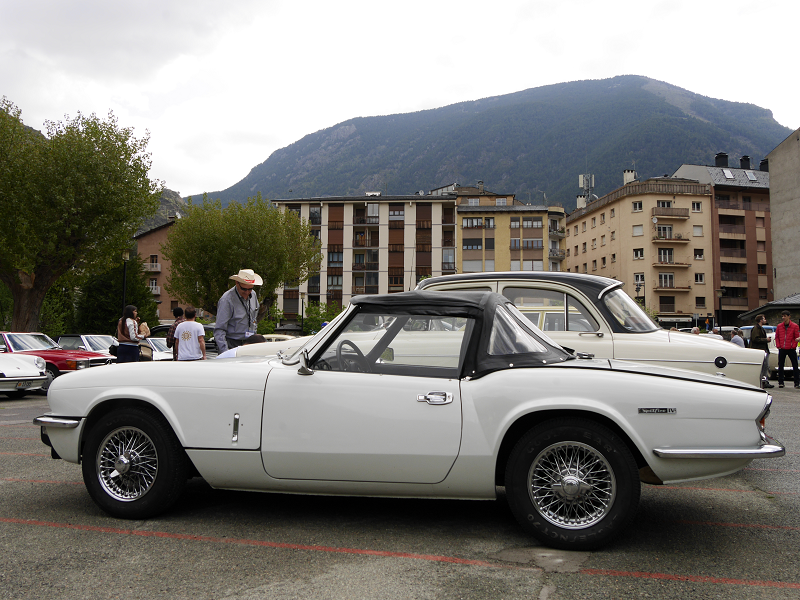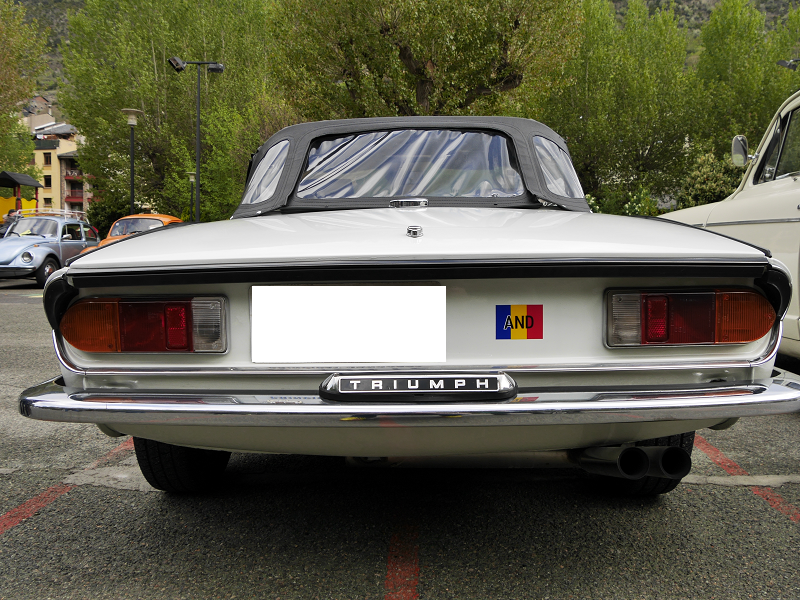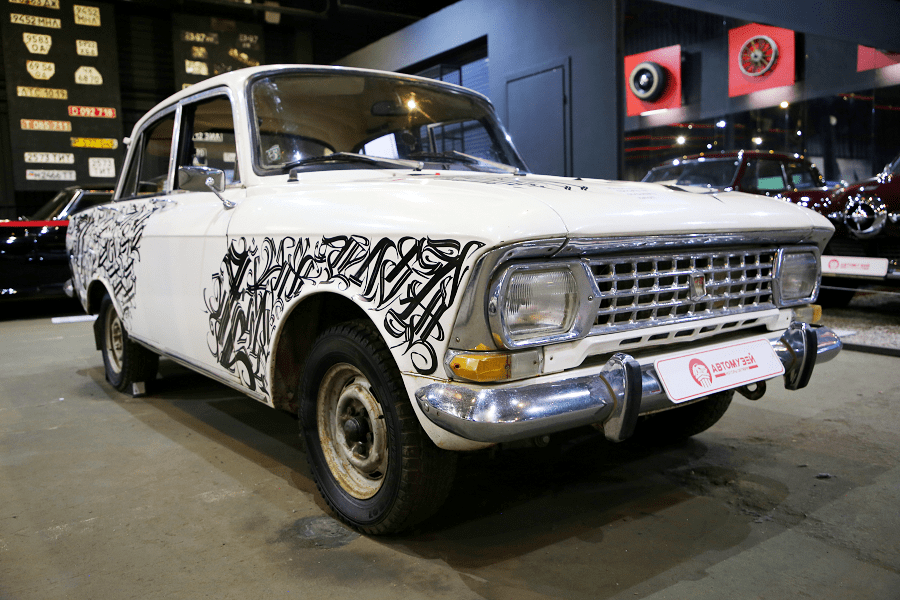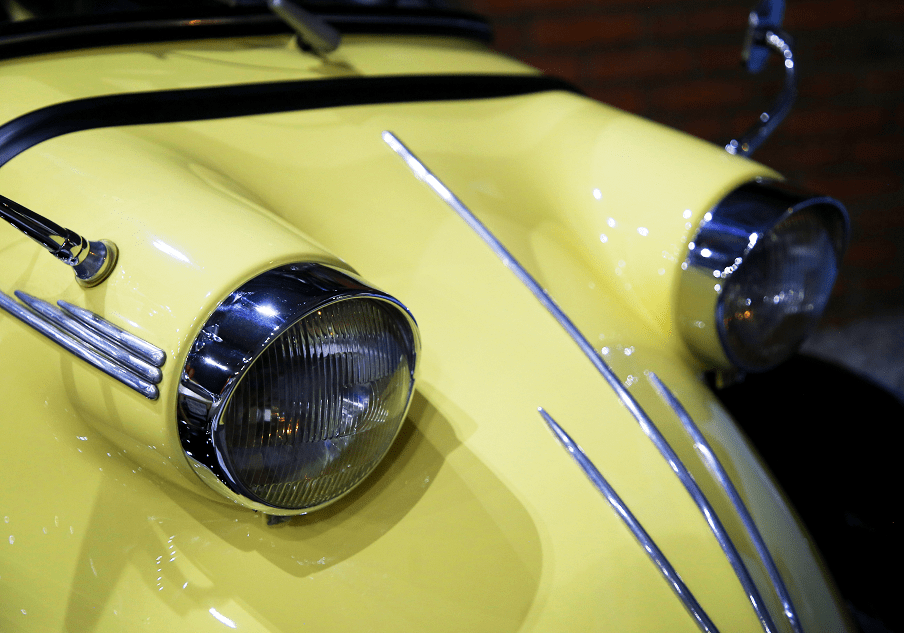Triumph Spitfire IV: white cabriolet from 1973
The Triumph Spitfire is a British sports car and manufactured over five production iterations between 1962 and 1980. Styled for Standard-Triumph in 1957 by Italian designer Giovanni Michelotti, the Spitfire was introduced at the London Motor Show in 1962. It was manufactured at the Standard-Triumph Canley works, with approximately 315,000 produced over 18 years.
Developed on a shortened variant of the Triumph Herald saloon/sedan’s chassis, the Spitfire shared the Herald’s running gear and Standard SC engine. The design used body-on-frame construction, augmented by structural components within the bodywork and rear trailing arms attached to the body rather than the chassis. A manually deployable convertible top, substantially improved on later models, provided weather protection and a bespoke hard-top was available as a factory option.
Spitfire Mark IV (1970–74)
The Mark IV featured a redesigned rear, similar to the Triumph Stag and Triumph 2000 models, both also designed by Michelotti. The front end was revised with a new bonnet pressing, eliminating the weld lines on top of the wings, door handles were recessed, the convertible top received squared-off corners. The interior was revised to include a full-width dashboard, with instruments ahead of the driver rather than over the centre console, initially finished in black plastic and then from 1973 finished in wood.
The engine was now rated at 63 horsepower for the UK market, with a 9:1 compression ratio and twin SU HS2 carburetors. (The less powerful North American version continued to use a single Zenith Stromberg carburetor and an 8.5:1 compression ratio) due to the German DIN system; the output was the same for the early Mark IV. Performance was slower than the Mark III due to its weight increase and taller 3.89:1 final drive as opposed to the earlier 4.11:1.
The Mk. IV engine displaced 1,296 cc (79.1 cu in) throughout the production run, and in 1973 received larger big-end bearings to rationalise production with the TR6 2.5-litre engines. The engine was also detuned to meet new emissions regulations. With the overall weight also increasing to 1,717 lb (779 kg) performance dropped, with 0 to 60 mph (0 to 97 km/h) now in 15.8 seconds and top speed reduced to 90 mph (140 km/h). Fuel economy was 32 mpg‑imp (8.8 L/100 km; 26.6 mpg‑US).
A revised hardtop also became available, with rear quarter-lights and a flatter rear screen.
Importantly, the heavily criticised rear suspension was decambered, incorporating what Triumph called a “swing spring”. One leaf of the suspension “stack” was eliminated and only the bottom leaf was attached rigidly to the differential. The remaining leaves were mounted to pivot freely — eliminating the worst characteristics of the original swing-axle. This was a different approach than that taken with the Triumph GT6 Mk II (GT6+) and Triumph Vitesse Mark 2, both of which received new lower wishbones and Rotoflex half-shaft couplings. The result on all these cars was improved handling.
The Mark IV went on sale in the UK at the end of 1970 with a base price of £735.



